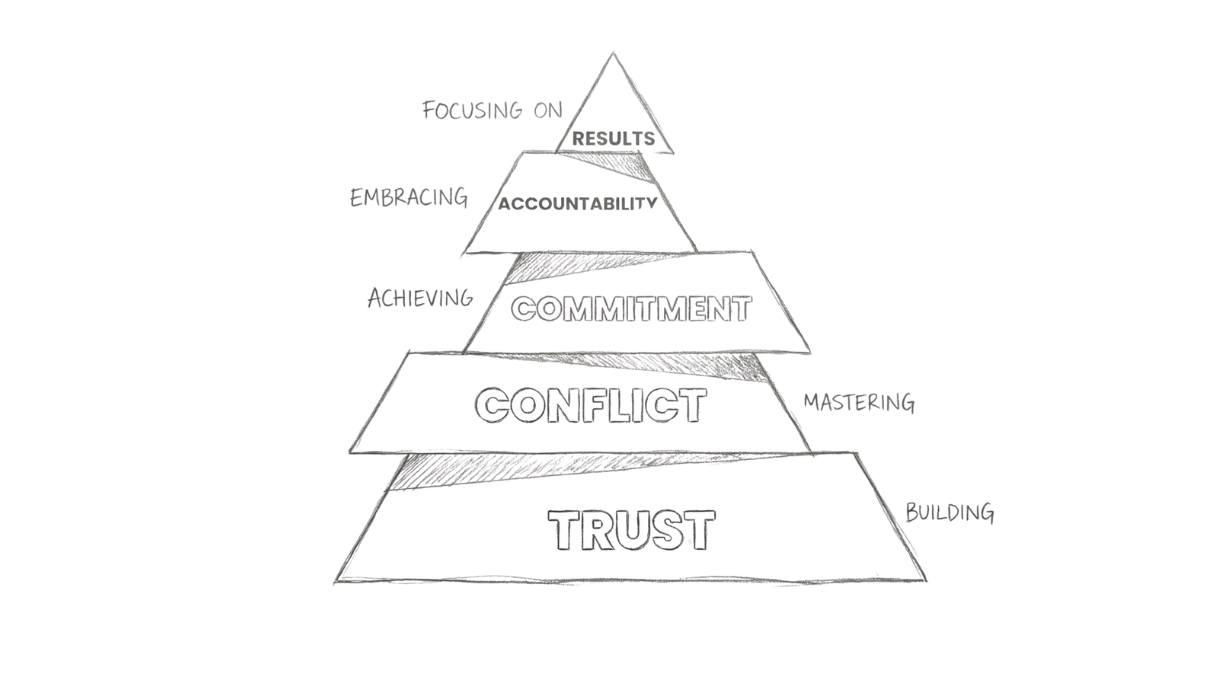The Five Dysfunctions of a Team
“Alone we can do so little; together we can do so much.”
An organisation is only as good as its team.
So when things aren’t going well, performance soon begins to suffer.
This phenomenon explains why lesser-skilled teams can sometimes beat their more talented opponents.
Why does this happen?
The simple answer is that teams are composed of people, and managing people is no easy task.
What makes human beings so wonderful also makes them difficult to lead.
They’re unpredictable, prone to irrational behaviour and can be inconsistent in their output.
Therefore, if you find yourself in the position of managing others, it helps to learn what makes a team function well.
One way to do this is by understanding the opposite - what leads to a dysfunctional team?
Thanks to Patrick Lencioni, the author of The Five Dysfunctions of a Team, you won’t have to spend hours and hours figuring them out for yourself.
Let’s take a look at each of Patrick’s points below in more detail so you can learn to identify them within your own company or organisation:
1. Absence of Trust
Mutual trust is the foundation of any healthy relationship.
You have to believe the other person or persons have your back. When trust is absent, team members are unwilling to make themselves vulnerable. This is a problem because vulnerability is a big part of creative thinking; you must be willing to make mistakes or ask silly questions.
Without creative thinking, your team’s ability to solve complex problems becomes extremely difficult.
As the author himself says, "Teamwork begins by building trust. And the only way to do that is to overcome our need for invulnerability."
2. Fear of Conflict
Few of us enjoy getting into arguments with colleagues.
This fear of conflict leads team members to seek ‘artificial harmony’ over constructive debate. In other words, they’ll go along with things they disagree with just to keep the peace.
The result of all this?
The important issues are left undiscussed, and they grow into more significant problems over time.
3. Lack of Commitment
A lack of trust and a fear of conflict results in a lack of clarity.
This creates ambiguity within the organisation, making it difficult for teams to make decisions they will stick to.
After all, it’s hard to commit to something if you’re not 100% clear about what it is you’re committing to.
4. Avoidance of Accountability
The desire to avoid conflict leads to a lack of accountability.
This happens because team members are afraid to call out the questionable behaviour of their peers or bosses.
This lowers the bar for what is deemed acceptable and prevents the team from achieving high-quality outcomes.
5. Inattention to Results
The more individuals focus on personal success before team success, the worse the collective outcome.
Ultimately, a team’s success can only be assured when each member contributes to the overall goal instead of focusing on personal advancement.
Do you recognise any of the above behaviours in your organisation? If so, take a moment to think about what you could do as a leader to address them.
The value of doing so is too great to ignore.
As Lencioni writes, “If you get all the people in an organization rowing in the same direction, you could dominate any industry, in any market, against any competition, at any time.”






